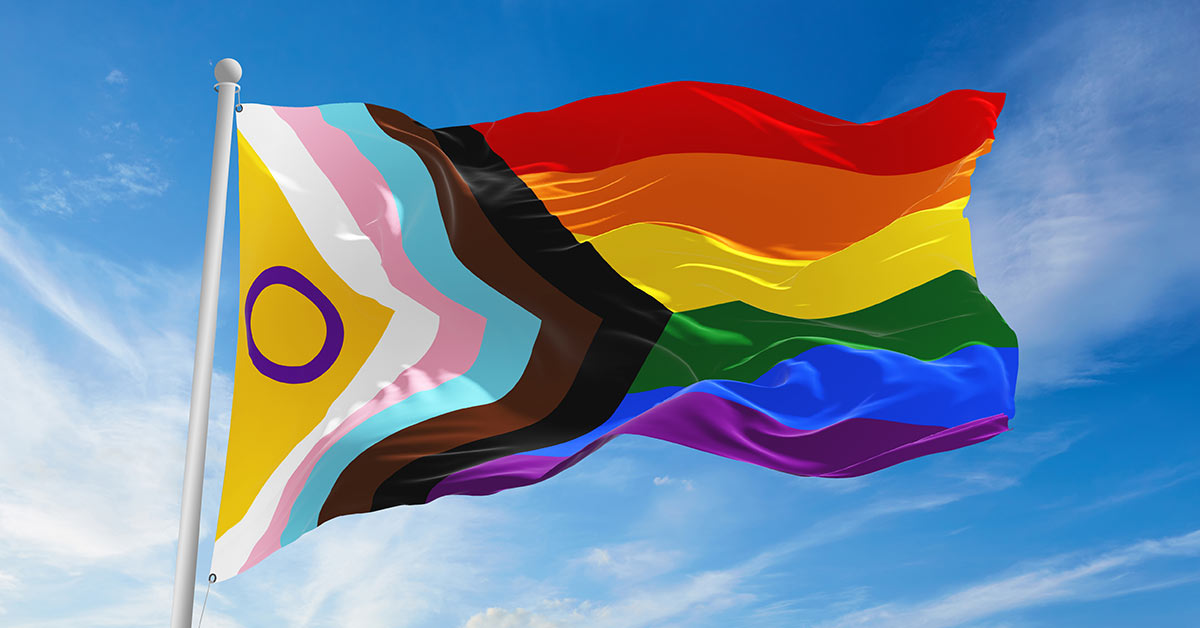Why is there controversy over the Progressive Pride Flag?

The Progressive Pride Flag including elements of the Intersex Flag
Throughout its history, queer liberation has always come with a host of symbols and signs meant to either highlight the issues faced by this community, or to serve as a signal to other people that are LGBTQI+.
In Oscar Wilde’s day, for example, gay men would wear green carnations to indicate that they were queer, owing to the fact that the colour green indicated “homosexual affiliations” at the time. Similarly, lesbians used violets and the colour purple in the early 20th century.
Gilbert Baker’s iconic Pride Flag was originally designed for the 1978 San Francisco Gay Freedom Day celebration, and was intended to be a symbol of hope and liberation, providing an alternative to the symbolic pink triangle, which was reclaimed after it had been used to identify gay men during the Holocaust.
Over the years, many other flags have been added to the LGBTQI+ collection, including the Bisexual Flag, the Transgender Pride Flag, the Intersex Flag and even the South African LGBTI flag, which caused quite a stir when it was initially released in 2011.
The Progressive Pride Flag and inclusivity
You might have noticed some online debate surrounding some of the latest additions to the LGBTQI+ community’s collection of flags. After Philadelphia’s Office of LGBT Affairs in 2017 added black and brown stripes to the Baker flag, graphic designer Daniel Quasar in 2018 created the Progressive Pride Flag.
Meant to be more inclusive, the Progressive Pride Flag adds a horizontal chevron featuring the trans flag’s pink and blue, along with black and brown stripes that represent marginalised LGBT communities of colour.
While the new design was initially hailed for also highlighting communities that have been central to the LGBTQI+ liberation movement, it has recently been lambasted for various reasons, most notably because critics don’t believe the inclusivity portrayed in the Progressive Pride Flag is something that reflects reality.
Both locally and abroad, for example, queer and trans people of colour are disproportionately affected by violence and discrimination, as they have always been. In the same vein, the fight for trans equality continues, exacerbated by input from prominent trans-exclusionary radical feminists like Harry Potter author, J.K. Rowling.
One the other hand, some argue that the original Gilbert Baker flag was already inclusive of everyone in the community; (the colours are intended to highlight ideas such as life, healing, sunlight etc…) Adding new colours to represent specific segments of the LGBTQI+ community, traditionalists say, only serves to fragment the unity that the flag is meant to display.
However, it can also be argued that there is no reason to not continue to evolve and transform the flag, just as the world evolves, and that there is huge value in the visible inclusion in the flag of those who have so often been rendered invisible.
A recent new revision to the Progressive Pride Flag was designed by Valentino Vecchietti of Intersex Equality Rights UK, who added a yellow triangle with a purple circle to represent the intersex community.
The purpose of Pride flags
It is important to consider what meaning and purpose flags have had throughout history. Meant to be unifying symbols, flags denote ideas about belonging and citizenship, drawing from their traditionally nationalistic origins.
The historian Benedict Anderson refers to nations as “imagined communities”, stating that this is “because the members of even the smallest nation will never know most of their fellow-members, meet them, or even hear of them, yet in the minds of each lives the image of their communion.” This is also the case with flags that represent the LGBTQI+ community.
For this reason, it will serve us to examine what the Progressive Pride Flag sets out to achieve. By including groups that have previously not been explicitly made a part of this symbolic portrayal of the community – this, despite their cardinal role in liberating said community – the status quo tells us that it has long been necessary to expand the imagined community that stands united under Pride flags.
We’ll never be able to meet every single LGBT person in the world, nor will we ever fully understand the plight of queer and trans communities of colour if we are not queer, trans and Black ourselves, but that doesn’t mean that these groups aren’t very much a part of the greater LGBTQI+ family, as they have always been.
The debate around the use of the Progressive Pride Flag essentially boils down to one central question: does it stand as a symbol that unites this imagined community? If the answer is “no”, perhaps it is time we started examining what the image of communion in our own minds really looks like.
View this post on Instagram
Leave a Reply